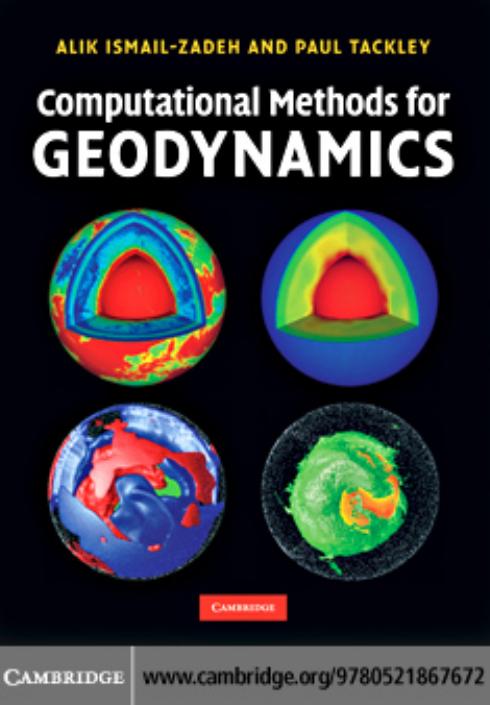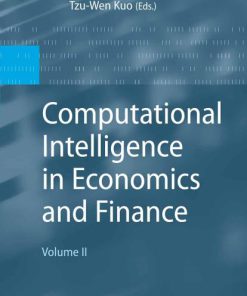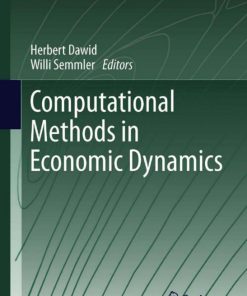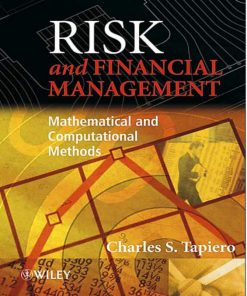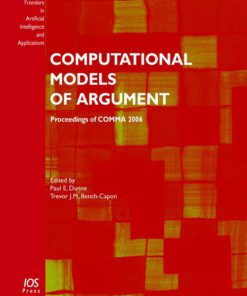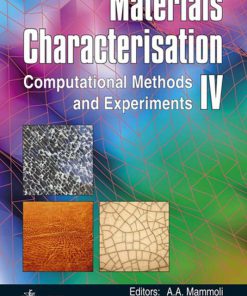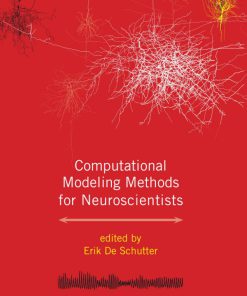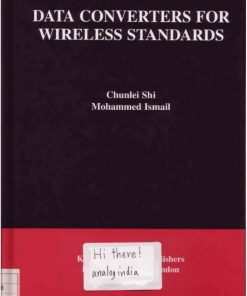Computational Methods for Geodynamics 1st Edition by Alik Ismail Zadeh, Paul Tackley ISBN 0521867673 9780521867672
$50.00 Original price was: $50.00.$25.00Current price is: $25.00.
Authors:Alik Ismail-Zadeh, Paul Tackley , Tags:0521867673; 9780521867672; 0511776632; 9780511776632 , Author sort:Alik Ismail-Zadeh, Paul Tackley , Ids:0521867673 , Languages:Languages:eng , Published:Published:Jun 2010
Computational Methods for Geodynamics 1st Edition by Alik Ismail Zadeh, Paul Tackley – Ebook PDF Instant Download/Delivery. 0521867673, 9780521867672
Full download Computational Methods for Geodynamics 1st Edition after payment
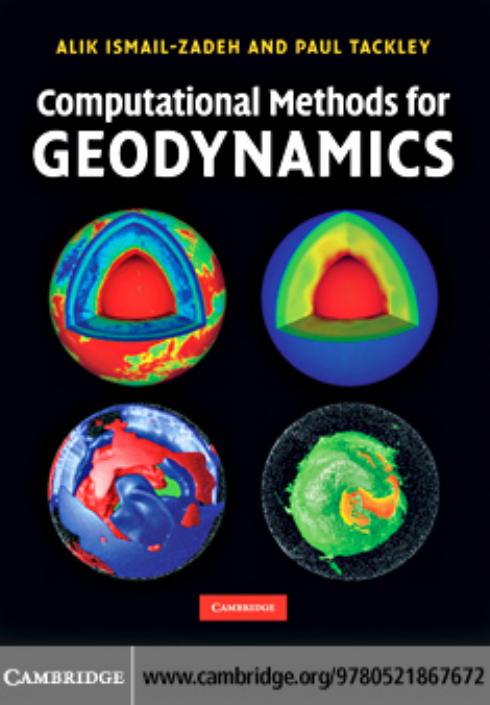
Product details:
ISBN 10: 0521867673
ISBN 13: 9780521867672
Author: Alik Ismail Zadeh, Paul Tackley
Written as both a textbook and a handy reference, this text deliberately avoids complex mathematics assuming only basic familiarity with geodynamic theory and calculus. Here, the authors have brought together the key numerical techniques for geodynamic modeling, demonstrations of how to solve problems including lithospheric deformation, mantle convection and the geodynamo. Building from a discussion of the fundamental principles of mathematical and numerical modeling, the text moves into critical examinations of each of the different techniques before concluding with a detailed analysis of specific geodynamic applications. Key differences between methods and their respective limitations are also discussed – showing readers when and how to apply a particular method in order to produce the most accurate results. This is an essential text for advanced courses on numerical and computational modeling in geodynamics and geophysics, and an invaluable resource for researchers looking to master cutting-edge techniques. Links to supplementary computer codes are available online.
Computational Methods for Geodynamics 1st Table of contents:
1 Basic concepts of computational geodynamics
1.1 Introduction to scienti.c computing and computational geodynamics
1.2 Mathematical models of geodynamic problems
1.3 Governing equations
1.3.1 The equation of continuity
1.3.2 The equation of motion
1.3.3 The heat equation
1.3.4 The rheological law
1.3.5 Other equations
1.3.6 Boussinesq approximation
1.3.7 Stream function formulation
1.3.8 Poloidal and toroidal decomposition
1.4 Boundary and initial conditions
1.5 Analytical and numerical solutions
1.6 Rationale of numerical modelling
1.7 Numerical methods: possibilities and limitations
1.8 Components of numerical modelling
1.9 Properties of numerical methods
1.10 Concluding remarks
2 Finite difference method
2.1 Introduction: basic concepts
2.2 Convergence, accuracy and stability
2.3 Finite difference sweep method
2.4 Principle of the maximum
2.5 Application of a .nite difference method to a two-dimensional heat equation
2.5.1 Statement of the problem
2.5.2 Finite difference discretisation
2.5.3 Monotonic “nite difference scheme
2.5.4 Solution method
2.5.5 Veri“cation of the “nite difference scheme
3 Finite volume method
3.1 Introduction
3.2 Grids and control volumes: structured and unstructured grids
3.3 Comparison to .nite difference and .nite element methods
3.4 Treatment of advection–diffusion problems
3.4.1 Diffusion
3.4.2 Advection
3.5 Treatment of momentum–continuity equations
3.5.1 Discretisation
3.5.2 Solution methods
3.5.3 Multigrid
3.6 Modelling convection and model extensions
3.6.1 Overall solution strategy
3.6.2 Extension to compressible equations
3.6.3 Extension to spherical geometry
4 Finite element method
4.1 Introduction
4.2 Lagrangian versus Eulerian description of motion
4.3 Mathematical preliminaries
4.4 Weighted residual methods: variational problem
4.5 Simple FE problem
4.6 The Petrov–Galerkin method for advection-dominated problems
4.7 Penalty-function formulation of Stokes .ow
4.8 FE discretisation
4.9 High-order interpolation functions: cubic splines
4.10 Twoand three-dimensional FE problems
4.10.1 Two-dimensional problem of gravitational advection
4.10.2 Three-dimensional problem of gravitational advection
4.11 FE solution re.nements
4.12 Concluding remarks
Step 1. Pre-processing phase
Step 2. Solution phase
Step 3. Post-processing phase
5 Spectral methods
5.1 Introduction
5.2 Basis functions and transforms
5.2.1 Overview
5.2.2 Trigonometric
5.2.3 Chebyshev polynomials
5.2.4 Spherical harmonics
5.3 Solution methods
5.3.1 Poisson s equation
5.3.2 Galerkin, Tau and pseudo-spectral methods
5.4 Modelling mantle convection
5.4.1 Constant viscosity, three-dimensional Cartesian geometry
5.4.2 Constant viscosity, spherical geometry
5.4.3 Compressibility
5.4.4 Self-gravitation and geoid
5.4.5 Tectonic plates and laterally varying viscosity
6 Numerical methods for solving linear algebraic equations
6.1 Introduction
6.2 Direct methods
6.2.1 Gauss elimination
6.2.2 LU-factorisation
6.2.3 Cholesky method
6.3 Iterative methods
6.3.1 Jacobi method
6.3.2 Gauss…Seidel method
6.3.3 Conjugate gradient method
6.3.4 Method of distributive iterations
6.4 Multigrid methods
6.4.1 Two-grid cycle
6.4.2 Restriction, prolongation and coarse grid operators
6.4.3 Multigrid cycle
6.4.4 Full approximation storage (for non-linear problems or grid re“nement)
6.4.5 Full multigrid
6.4.6 Algebraic multigrid
6.5 Iterative methods for the Stokes equations
6.5.1 Distributive iterations
6.5.2 SIMPLE method
6.5.3 Uzawa-type methods
6.6 Alternating direction implicit method
6.7 Coupled equations solving
6.8 Non-linear equation solving
6.9 Convergence and iteration errors
7 Numerical methods for solving ordinary and partial differential equations
7.1 Introduction
7.2 Euler method
7.3 Runge–Kutta methods
7.4 Multi-step methods
7.4.1 The midpoint rule (leap-frog method)
7.4.2 The trapezoidal rule
7.5 Crank–Nicolson method
7.6 Predictor–corrector methods
7.6.1 The Adams…Bashforth…Moulton method
7.7 Method of characteristics
7.8 Semi-Lagrangian method
7.9 Total variation diminishing methods
7.10 Lagrangian methods
7.10.1 Lagrangian meshes
7.10.2 Particle-in-cell method
8 Data assimilation methods
8.1 Introduction
8.2 Data assimilation
8.3 Backward advection (BAD) method
8.4 Application of the BAD method: restoration of the evolution of salt diapirs
8.5 Variational (VAR) method
8.6 Application of the VAR method: restoration of mantle plume evolution
8.6.1 Forward modelling
8.6.2 Backward modelling
8.6.3 Performance of the numerical algorithm
8.7 Challenges in VAR data assimilation
8.7.1 Smoothness of observational data
8.7.2 Smoothness of the target temperature
8.7.3 Numerical noise
8.8 Quasi-reversibility (QRV) method
8.8.1 The QRV method for restoration of thermo-convective ”ow
8.8.2 Optimisation problem
8.8.3 Numerical algorithm for QRV data assimilation
8.9 Application of the QRV method: restoration of mantle plume evolution
8.10 Application of the QRV method: restoration of descending lithosphere evolution
8.10.1 The Vrancea seismicity and the relic descending slab
8.10.2 Temperature model
8.10.3 QRV data assimilation
8.10.4 What the past tells us
8.10.5 Limitations and uncertainties
8.11 Comparison of data assimilation methods
8.12 Errors in forward and backward modelling
9 Parallel computing
9.1 Introduction
9.2 Parallel versus sequential processing
9.3 Terminology of parallel processing
9.4 Shared and distributed memory
9.4.1 Shared memory
9.4.2 Distributed memory
9.5 Domain decomposition
9.6 Message passing
9.7 Basics of the Message Passing Interface
9.8 Cost of parallel processing
9.9 Concluding remarks
10 Modelling of geodynamic problems
10.1 Introduction and overview
10.2 Numerical methods used
10.2.1 Mantle convection
10.2.2 Crust and lithosphere dynamics
10.3 Compressible .ow
10.3.1 Importance, extended Bounssinesq and anelastic approximations
10.3.2 Continuity equation
10.3.3 Momentum equation
10.3.4 Energy equation
10.3.5 Non-dimensionalisation and dissipation number
10.4 Phase transitions
10.4.1 Background
10.4.2 Effective expansivity and heat capacity
10.4.3 Fixed depth approximations
10.4.4 Phase equilibria approach
10.5 Compositional variations
10.5.1 Field-based approaches
10.5.2 Tracer (marker)-based approaches
10.6 Complex rheologies
10.6.1 Non-Newtonian creep and plasticity
10.6.2 Viscoelasticity
10.7 Continents and lithospheric plates in mantle convection models
10.7.1 Overview
10.7.2 Rigid block approach
10.7.3 Rheological approach
10.8 Treatment of a free surface and surface processes
10.9 Porous .ow through a deformable matrix
10.10 Geodynamo modelling
People also search for Computational Methods for Geodynamics 1st:
computational methods for geodynamics
numerical and computational methods
how to calculate computational cost
methods of computation
computational methods for fluid dynamics pdf
You may also like…
eBook DJVU
Computational Methods of Linear Algebra 1st Edition by V N Faddeeva ISBN 978-0486604244 0486604241

